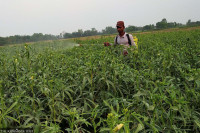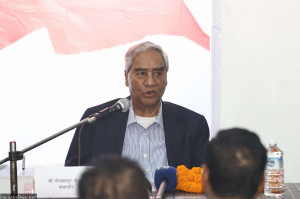Editorial
Forests in flames
Dealing with the crisis calls for a multi-level approach, starting with ethical and sensible handling of forests.
Four people succumbed to burn injuries when a forest fire broke out last week in Bhumikasthan Municipality-2 in Arghakhanchi of western Nepal. One more was seriously injured. The accident reportedly happened when the locals were trying to douse a fire, a reminder of the utter lack of awareness among citizens across the country about forest fires and techniques to handle them. Not only did good Samaritans turn victims due to their failure to gauge the situation, what is unfortunate, if not shocking, is that the fire was the result of a human error. As usual, the government, through the District National Disaster Management Committee, announced an Rs50,000 relief for the families of the deceased and promised to punish the culprit.
But the story does not end there. The Arghakhanchi incident is only a representative of the fire crisis that engulfs Nepal in the dry season. Essentially, it points to a larger problem of our disregard for the environment and our safety. While the National Climate Change Policy 2019 recognises forest fires as a climate-induced disaster, it is not enough to leave it at that. Fires, in Nepal, are most often man-made: the fire starts with a smoker throwing a burning cigarette stub without thinking for a second about the consequences of their callousness. Also, in some cases, a fire is used as a tool of vengeance. Apart from such insensitivities, there is a casual attitude to fires in some individuals and communities, as they burn stubble to grow better grass or turn the land more fertile. That sometimes ends up in accidents that often go out of hand, as is evident in the spike in the number of fires throughout the country in the dry season.
Just last month, Kathmandu was tagged the world’s most polluted city as its Air Quality Index shot up to “very unhealthy” levels due to the widespread forest fires in areas surrounding the valley and beyond. Around the last week of April, over 600 daily incidents of forest fires had been reported as most national parks and protected areas in the country burned. Just a day after the Arghakhanchi incident, 11 people were injured in a forest fire in Malya Community Forest in Aathbis Municipality-6 in Dailekh. According to a study published in the Journal of Forest and Livelihood (June 2022), 29.5 percent of forests in Nepal are likely to catch fire every year. According to the same report, 58 percent of such fires in Nepal are a result of deliberate burning, while 22 percent are caused by negligence and 20 percent by accident. This explains why forest fires remain a burning problem in Nepal.
While it is understandable that traditional fire extinguishers are of little help in wildfires, there is also a general lack of extinguishers, even in urban and semi-urban areas. Most local levels in the country don’t have fire engines and the financial and human resources to handle fire-related emergencies. Apart from allocating an adequate budget to hire more manpower for handling disasters such as fires, local levels need to be empowered to organise regular fire drills in schools and communities so that in emergencies, the locals come in with expert knowledge. There is also a need to establish early warning signs to locate the fires and extinguish them without ado. An effective response to the fire problem also calls for a multi-level approach, starting with a sustained, nationwide campaign to raise awareness about the ethical and sensible handling of forests, with a focus on forest fires.




 18.12°C Kathmandu
18.12°C Kathmandu














